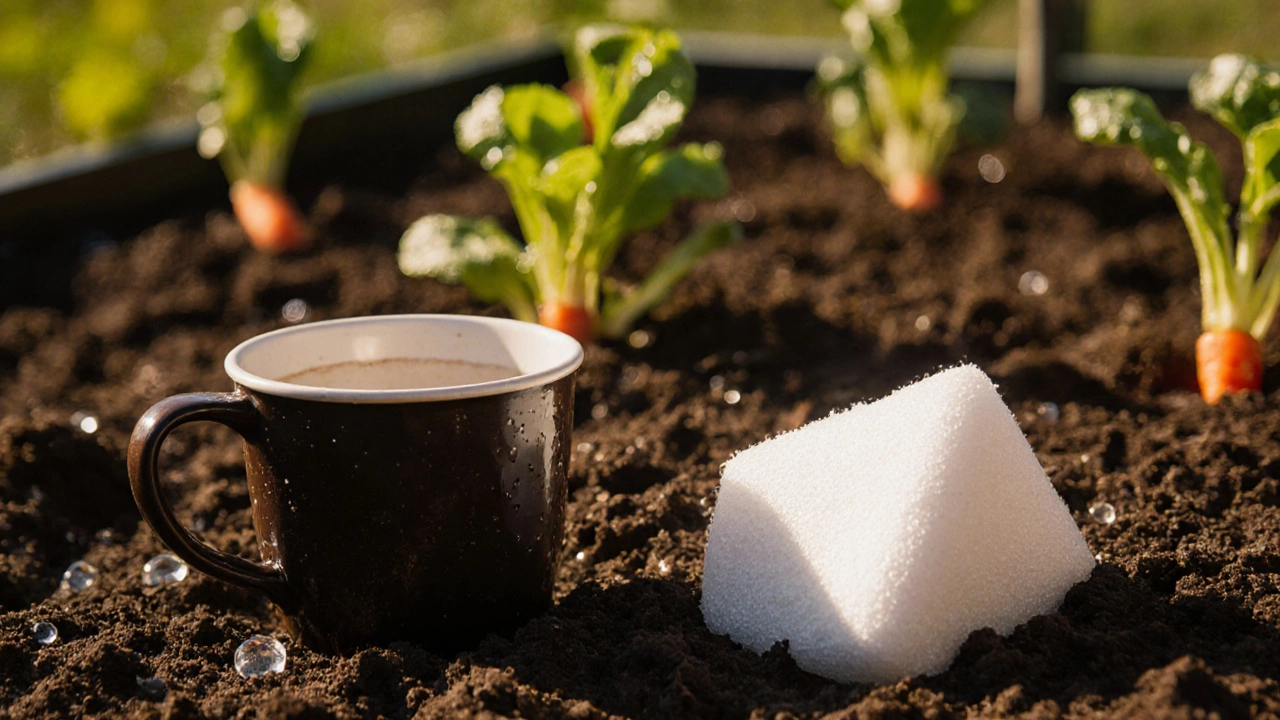Explore the safety of styrofoam in vegetable gardens, covering its effects on soil health, risks, benefits, alternatives, and practical guidelines for growers.
Soil Health: What It Is and Why It Matters for Indian Gardens
When we talk about soil health, the condition of soil that supports plant growth through balanced nutrients, good structure, and active microbes. Also known as ground quality, it's not just what you see beneath your plants—it's the living system that feeds them, holds water, and lets roots breathe. In India, where monsoons wash away nutrients and hard clay turns to brick in summer, soil health makes the difference between a thriving garden and a struggling one.
Good soil amendments, materials added to improve soil structure, fertility, or pH like compost, leaf mold, and perlite aren’t optional extras—they’re the fix for common Indian soil problems. If your soil is dense and sticky after rain, or cracks open in dry months, it’s not broken—it’s just missing the right inputs. Compost adds food for microbes, perlite opens up tight clay, and leaf mold helps retain moisture without rotting roots. These aren’t fancy products; they’re natural tools that work with how Indian seasons behave.
And it’s not just about what you add—it’s about what you avoid. Over-tilling, chemical fertilizers that kill microbes, and leaving soil bare between crops all hurt garden soil improvement, the ongoing process of enhancing soil structure and nutrient content for better plant growth. Healthy soil doesn’t need constant intervention. It needs respect. Cover it with mulch. Feed it with organic matter. Let it rest. The plants will tell you when it’s working—through stronger stems, fewer pests, and blooms that last.
What you’ll find in the posts below isn’t theory—it’s what real gardeners in India are doing right now. From fixing heavy clay with simple kitchen scraps to choosing the right mix for balcony pots, these guides show you exactly how to rebuild your soil without spending a fortune or waiting years. You’ll learn how compost turns waste into gold, why perlite beats sand for drainage, and how even a small terrace garden can have soil as alive as a forest floor. This isn’t about perfection. It’s about progress—one handful of good dirt at a time.
Regenerative agriculture is transforming the way we approach sustainable gardening by focusing on improving soil health, biodiversity, and water management. It offers an eco-friendly alternative to conventional farming methods but comes with its set of challenges. This approach not only promises a healthier environment but also boosts crop resilience and reduces the carbon footprint. However, some critics question its scalability and economic viability for larger operations. Let’s explore the pros and cons of regenerative agriculture in the gardening world.

